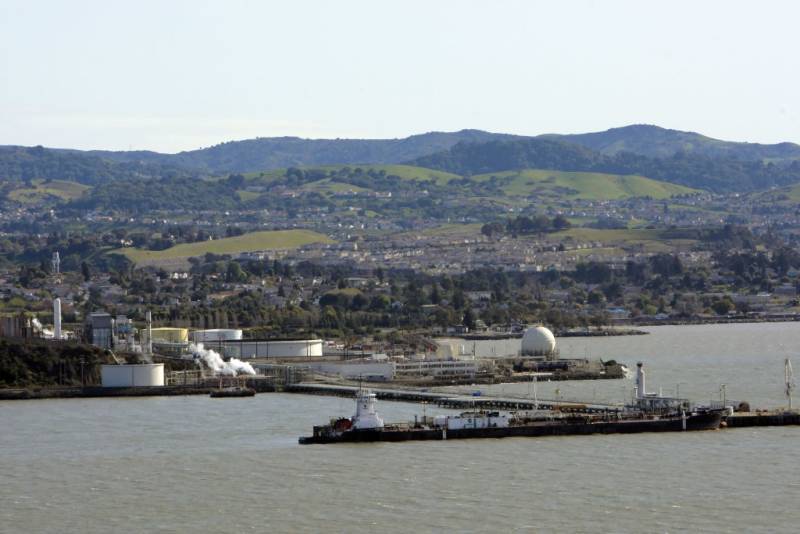More than 5,200 toxic sites buried along the lip of San Francisco Bay could be impacted by rising groundwater levels over the next century, posing potentially severe risks to human and environmental health, according to a recently released study.
That’s more than 10 times as many potentially at-risk Bay Area sites as had been identified in previous reports. A disproportionate number are located in lower-income communities of color, including in low-lying areas of San Francisco, Richmond, West Oakland and East Palo Alto.
“The higher the social vulnerability, the higher the density of contaminated sites,” said Kristina Hill, director of UC Berkeley’s Institute of Urban and Regional Development, who co-authored the study.
Unlike much lower tallies from the federal and state agencies that oversee these sites, Hill’s study includes 1,480 open sites, which are in the process of being cleaned up or have not yet been cleaned up, as well as an additional 3,817 closed sites where some level of cleanup work may have been conducted, but that may still contain residual contaminants and be vulnerable to rising groundwater.
The map below shows the more than 5,000 open (orange circle) and closed (black square) contaminated sites in the Bay Area that UC Berkeley Institute of Urban and Regional Development researchers identified as being potentially at risk of inundation by rising groundwater over the next century. Open sites include areas where cleanup has yet to begin or is still in progress. Closed sites include areas where cleanup has been completed but may still contain harmful toxins. For more information on each toxic site and the agency overseeing its cleanup, visit either of these searchable databases: Envirostor (from California’s Department of Toxics Control) or GeoTracker (from the state Water Resources Control Board).
Sites are contaminated with everything from radioactive materials and small underground petroleum tanks to toxic chemicals that can vaporize into pipes leading directly to homes, Hill said. Some sites date to the 19th century.
“It’s like a graveyard,” Hill said. “Everything we’ve done in the past is coming up with that groundwater to haunt us in the present.”
While other studies have identified toxic sites at risk of coastal flooding due to climate change, this is the first to comprehensively pinpoint areas where rising groundwater is likely to come into contact with contaminants and potentially move them toward both the bay and people’s homes. Twice as much land in the Bay Area could be affected by groundwater rise compared to coastal flooding, according to the new study, which is currently in the process of peer review (a preprint and preliminary data are publicly available).
Hill found that in nearly all Bay Area counties, the impact from rising groundwater along the bay will be more severe than from the more than three feet of sea level that could take place by mid-century. She said additional research is needed to better understand the risks those contaminants pose to human health.
In the study, Hill found that in all but one Bay Area county (Santa Clara County), the impact from rising groundwater along the bay will be more severe than that from rising seas. She said additional research is needed to better understand the risks those contaminants pose to human health.

